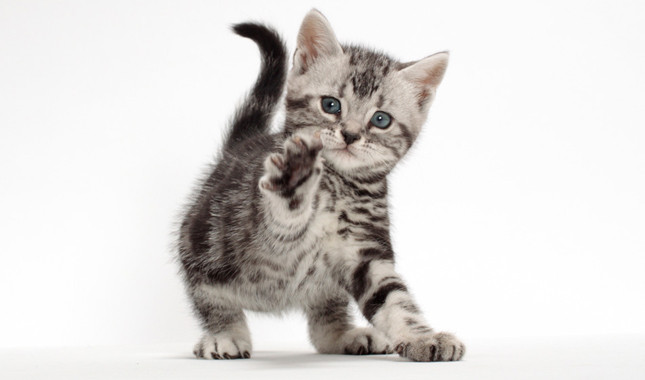
The Breed History
The American Shorthair derives from stock brought over from
Europe with the pioneers. The British Shorthair is likely one of the
main progenitors; the first registered cat (1904) was sired by a
British Shorthair. Bred for rodent control, these hardy cats made do
with a harsh outdoor lifestyle living in streets and barns. Common
in North America, the registry allowed housecats without pedigree
into the breed for many years but now the registry books are closed.
The breed name changed from Domestic Shorthair to American
Shorthair in 1966. The CFA accepted this breed first in 1906 and it
has remained popular for many years (a top 10). The FIFР№ does not
recognize the American Shorthair.
Physical Characteristics
Weight: females 8-12 lb (3.5-5.5 kg), males 11-15 lb (5-7 kg)
Coat: The dense coat is standoff and coat density increases during
the cold weather. Accepted colors and patterns number about 80,
with silver tabby being the most commonly seen. TICA and CFA
standards differ in the types of tabby accepted. Hair texture is crisp.
Eyes: Most eye colors accepted. The eyes are a modified round shape.
Points of Conformation: Though not the largest of the cat breeds,
the American Shorthair is particularly noted for sturdy bone and
muscling. Overall, their conformation is moderate in every way
(mesomorphic). The face is broad with prominent cheeks. The head
is slightly longer when compared to the British Shorthair. Ears are
medium sized and moderately wide set, with a rounded tip.
The tail is medium in length and thick, tapering to a blunt tip. Paws
are round. The nose is medium in length and in profile, is slightly
concave.
Grooming: Moderate grooming needs are met by a light brushing
about two times a week. A bit more care is needed while shedding.
Recognized Behavior Issues and Traits
Reported breed characteristics include: Gentle, affectionate, quiet,
playful and adaptable. An easy-going temperament is a breed
characteristic. Good with children and dogs generally. They are
robust and adaptable to both indoor and outdoor lifestyles. Not
demanding of attention.
Normal Breed Variations
In one study, 100% of American Shorthair cats tested blood type A.
Watch calorie intake to prevent obesity.
Good mothering ability.
Early sexual maturity.
Good longevity.
Drug Sensitivities
None reported in the literature
Inherited Diseases
Hypertrophic Cardiomyopathy (HCM): This is the most common
cardiac condition in cats (10% prevalence), and is seen in some lines
of American Shorthairs. It was reported that it was likely inherited
in this breed but the mode of inheritance was unknown.
An autosomal dominant mode of inheritance was considered most
likely in a family of American Shorthair cats. The condition was
described as familial systolic anterior motion of the mitral valve
and/or hypertrophic cardiomyopathy.
Onset of HCM is usually in middle age, and is more common in
males, but this breed tends to have a milder form of the condition
than some other breeds of cats such as the Ragdoll or Maine Coon.
It is thought to be due to a mutation affecting the myosin protein
in cardiac muscle. No specific screening recommendations have
been made to date for this breed.
Craniofacial Deformity: Some lines of the breed carry the gene
for this condition (best known in the Burmese cat: see that chapter
for details) though frequency is dropping due to careful breeding
management. These cat families tend to have a more extreme
facial feature set, as with the Contemporary Burmese. This is an
autosomal recessive disorder.
Nasal dermoids are sometimes present in some cats; these are also
seen in Burmese cats carrying this gene. Eyelid colobomas and cleft
lips have also been seen in the ASH. A shallow longitudinal furrow
of tissue, or color change running along the nose has been found
in almost 90% of American Shorthair carrier cats, and may be a
phenotypic marker of a carrier, though sensitivity and specificity of
this finding is not 100% so pedigree analysis should also be used.
Disease Predispositions
None reported in the literature
Rare and Isolated Reports
Polycystic Kidney Disease (PKD): PKD is most common in Persian
breeds, and those breeds having crossed out to Persians in their breeding programs. In screening programs carried out at the
University of California, Davis in 2002, American Shorthair cat
were found positive in two small test groups: In clinic I: 6 of 40
American Shorthair cats were positive, and in the second clinic, 2 of
8 American Shorthair cats tested positive by ultrasound screening
of healthy cats from catteries. A genetic test is available.
Ornithine Transcarbamylase Deficiency: One case report
describes an 18 month old American Shorthair cat presented
with stunted growth and postprandial depression. Elevated bile
acids and ammonia were noted. Urea cycle enzyme deficiency is
of sex linked dominant inheritance in humans, but of unknown
mechanism in cats. Diagnosis is by urinary metabolite identification;
a portosystemic shunt was ruled out.
Hereditary Deafness: Is associated with the dominant gene for
white cat (W); may be found in white cats of this breed.
Genetic Tests
Though there are no published recommendations for screening this
breed for HCM using echocardiography, one may consider screening
breeding stock until further information is available.
Direct genetic test for PKD is available from the UC-Davis VGL.
Miscellaneous
- Breed name synonyms: Domestic Shorthair (historical name in
use until 1960s), ASH, DASH
- Registries: ACFA, TICA, CFA, CFF, CCA, WCF
- Breed resources: National American Shorthair Club (CFA):
781 Progress Street
Macon, GA 31201
http://www.ashclub.org/
Photo Gallery of Breed - American Shorthair - Cat Breed
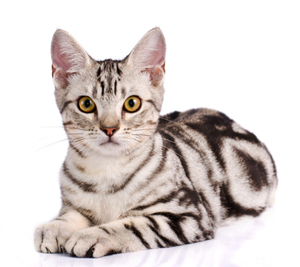

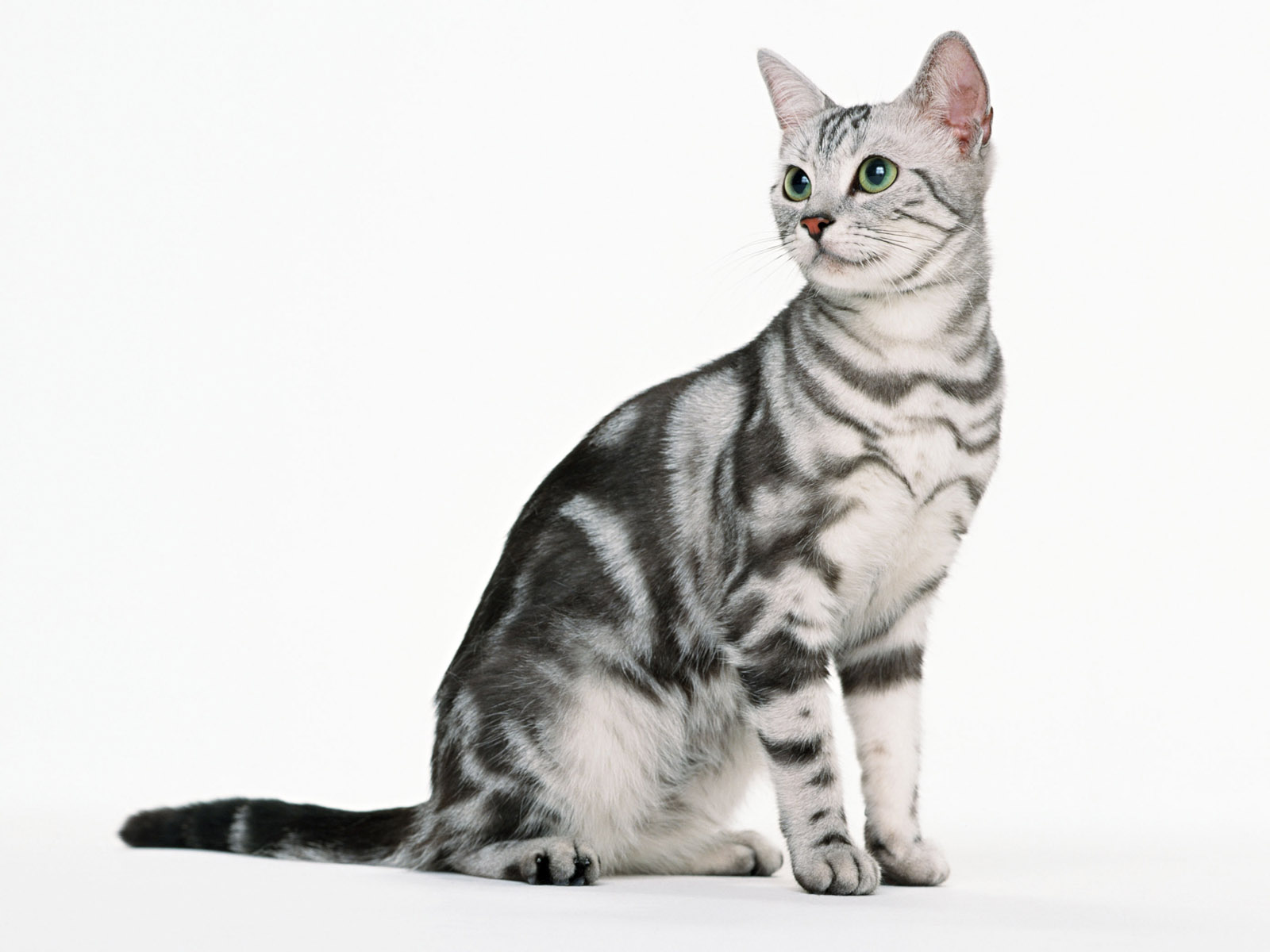

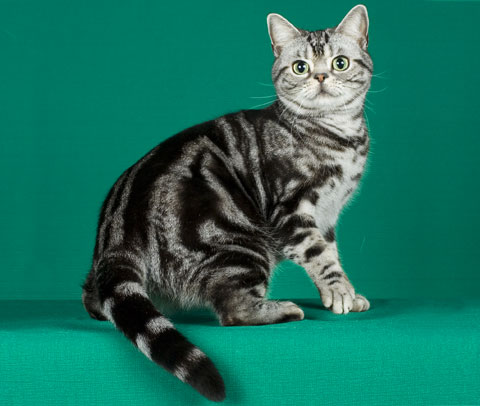
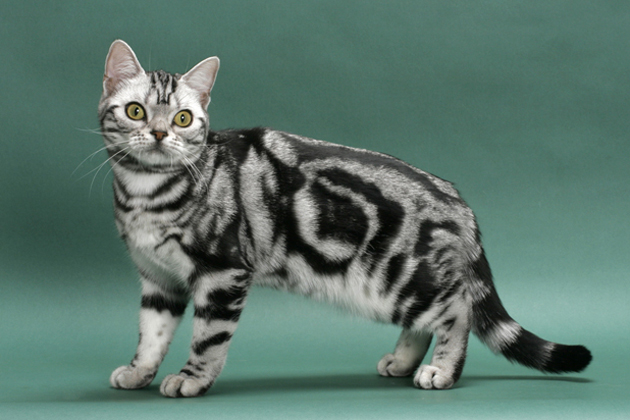

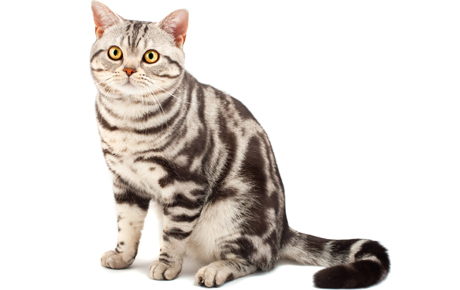
 Animalia Life
Animalia Life